The <I>Odyssey</I> Read online
Page 6
It is not surprising that in a preliterate, archaic culture, where there were no recognized international institutions or norms, the correct behavior toward outsiders was made into a sacred obligation. (The same phenomenon can still be observed today in isolated small-scale cultures.) This was in effect the only way in which individuals could survive beyond the bounds of their local community. Zeus had a special title, Xenios, to denote his role as protector of strangers. Any infraction was thus an offense against the chief god.
Xenia represents one key instance of a larger cultural requirement for reciprocity. This greater principle can be seen at work in a number of other areas alluded to by the Homeric poems. Animal sacrifice, prayer, and warfare were based on the idea that equilibrium must be maintained by giving or paying back either favors or hostility, either among humans or between humans and gods. The reciprocal expectations underlying xenia can explain the semantics of the term. Just as any “stranger” was a potential “guest”—and had to be so treated—any “guest” was by implication a potential “host,” as he was expected to pay back whatever treatment was received.
The entire Trojan War saga can be interpreted as a mythic example of the catastrophes brought on by improper guest-host relations. Paris, the young Trojan prince, was a guest of Menelaos in Sparte when he ran off with his host’s wife, Helen. The Greek chieftains who had sworn to help Menelaos were obliged to avenge this crime against xenia, even to the extent of besieging and razing Troy. (In this way, myth works like a legal precedent, justifying societal practices by reference to one case.) Odysseus’s return from Troy is therefore the continuation of a moral lesson about the need for maintaining equilibrium on the intersecting social and cosmic levels. If Odysseus is treated well, all is well with the world.
As with most socially significant actions in the Odyssey, importance can be measured by how often the theme recurs. Furthermore, the repetition comes in the form of stylized, almost predictable “scripts”—what Homerists call “type-scenes.” It is hard to say if the scripts are poetic devices or social rituals—one reinforces the other. Typically, the stranger is welcomed with kind words, the offer of a bath and fresh clothing, food and drink (and no questions asked until these preliminaries are over). He is encouraged to stay as long as he likes. Upon departure, he is provided with transportation and with “guest-gifts.” These precious items of exchange were a combination of souvenir and statement to the world of the host’s excellent behavior—because xenia, like everything else in Greek culture, could turn competitive.
If warriors like Odysseus can become paradigms of a behavior that divinity approves, it is not surprising that special mortals can attain a place apart from that of other humans, closer to the gods in terms of celebrity and power. The idea of the “hero” as someone between man and god is a specifically Greek invention. All over the Greek world, the graves of men and women who had attained notoriety in the community were sites of worship from at least the eighth century B.C. on, even into the Christian era. It is worth noting that not all were by any means heroic in senses current today. The hêrôs and hêrôinê were not primarily moral beings, but rather persons of great strength or special connection to the divine. The power to curse, or to do harm to others, marked the heroic status as much as did courage on behalf of society: these were the dark side of the power to do good or to heal. Herakles, whose exploits took him over the known world, conspicuously combined the warrior’s courage with aberrant, even berserk, behavior (sometimes excused as “madness” sent by his nemesis Here). He died, but paradoxically lived forever after he was taken up onto Olumpos following his fiery death on Mount Oita. His story may be taken as a paradigm for others—the hero fights, rules, often sins, dies, and gains postmortem fame (a form of immortality) along with semi-divine power. Even the parricide Oedipus was associated with heroic honors in several places; the Oedipus at Colonus of the tragedian Sophocles tells of the struggle between Athens and Thebes over claim to his prized burial site.
Among those associated with the Troy saga, such figures as Akhilleus, Menelaos, Agamemnon, and Diomedes were worshiped with the specific sacrificial rites of hero “cult” in shrines all around the Aegean. The dangerous aspects of the hero can be glimpsed partially in stories about each of these men, both within Homeric epic and beyond it. The godlike wrath of Akhilleus, which brought destruction to his own companions in the war, as much as his warcraft against the Trojans proved his heroic powers. Hundreds of other heroes, many of them otherwise unknown, are named in other literary sources or from inscriptions, since every community of any significance might boast a local hero. The alleged burial sites of heroes and heroines brought people eager for the blessings and protection that such powerful ancestors might bring. Recent archaeological work has shown that in many cases such worship started at real tombs of persons from the Mycenaean age, perhaps places rediscovered in the eighth century and later. At the civic level, heroic figures often stood for the pioneer founder of a city or colony, and so epitomized a community’s history and ambitions. That the leaders of colonizing expeditions were on occasion fugitive murderers did not detract from their heroization. The story of Odysseus unites several of these features. First, there are signs he was worshiped as a hero on Ithaka, with dedications of archaic tripods made in a cave near Polis Bay on the island (the date of dedication is disputed: eighth century or third century B.C.). Second, by the sixth century B.C. (and most likely earlier), the Theogony of Hesiod had assigned to Odysseus two sons by Kirke, named Latinos and Agrios, who were said to have ruled, with Telemakhos, over the Etruscans in the west. In other words, Odysseus was both local hero and father of colonizing heroes. Finally, in his justifiable anger at the suitors, Odysseus resembles his rival Akhilleus, as an exponent of divine wrath.
Character and the Domestic Triangle
The Odyssey contains dozens of figures. Part of the poem’s enchantment lies in its ability to create a realistic fictional world, populated not just by heroes but by the slaves and servants who support them, by herders and drivers as well as bards and seers. An influential treatise on literary art, On the Sublime (attributed to one “Longinus” and probably written in the first century A.D.), speaks of the poem’s sketches of daily life in the household of Odysseus as being “like some comedy of character” (9.15: kômôidia tis estin êthologoumenê).
For all its profusion of characters, nevertheless, the poem remains fixed around three mortals: Odysseus, his son, and his wife. The role of Telemakhos as a focus for the narrative and figure close to the audience has already been mentioned. What of his parents?
A folklorist would classify Odysseus, the compact, wiry protagonist who defeats huge beasts, as that universal figure, the trickster. Such characters emerge from deep within myth. Well-known tricksters from the Native Americas and Africa, characters like Spider, Crow, or Coyote, shape the way the cosmos is arranged, creating new land or inventing essential crafts or elements, such as weaving or fire. Hermes (in some versions the ancestor of Odysseus) fits this aspect—the Hymn to Hermes depicts his invention of sacrifice, for example—whereas Odysseus exhibits trickster qualities in a more human dimension. Like the folklore figures, he is associated with food (as the hungry beggar and master at dispensing wine to the Kuklops, as well as the only Iliad warrior who urges Akhilleus to eat before battle). Like the trickster, he is known for his relations with women and his slippery behavior. His adventures often involve animals. Not bestial himself, he nevertheless enjoys a “liminal” status, often on the threshold between the human and the natural worlds. One could read his character as an advance beyond the amorality of the trickster: since he knows so much about food, he can also resist temptations (cf. the cattle of the sun-god), and because he knows women so well, he can also resist Kirke and Kalupso (at least ultimately). Odysseus lives out the more rigid demands of a heroic ethos, although it may be too much to call him an ethical trickster.
But the Odyssey is more than a picaresque narrative about a
trickster hero. The fundamental shift from folktale to epic (or, some would say, proto-novel) depends on the poet’s decision to embed Odysseus in a set of relationships with other characters—a rare setting for the usually lone-wolf trickster. The Odyssey insists on these social connections by its very structure, interweaving the stories of Telemakhos and Penelopeia with that of Odysseus, and framing the whole within the motif of a family advancing cautiously to meet change. It is worth pointing out further that the homecoming (nostos) for Odysseus is both a personal and a socio-political return. This makes the Odyssey more complex and realistic than a simple romance about a reunited couple. Indeed, when we first hear of Odysseus in the poem, Penelopeia is not even mentioned: he sits on the shore of Kalupso’s island longing to see the smoke from his hearth-fire. A larger rootedness and security is at stake in his return. Odysseus needs his place in the social pattern—as king, and warrior, aristocrat, father, husband, son—as much as he craves private intimacy with his wife. In turn, his reunion with Penelopeia renews all Ithaka; even Laertes, his father, is rejuvenated and as the poem ends, three generations stand together, in an ideal image of continuity and regeneration. This is to say, finally, that the “character” of Odysseus in the poem is a function of his openness, his ability to let himself trust a few others (like Nausikaa), to lose at least a bit of the loner’s suspicion. Guile and survival instinct—the trickster’s inheritance—enable him to reach home, where imagination, empathy, and a sense of wider responsibility complete his reintegration, even after twenty years away.
And what of the woman who has waited all those years? By the end of the Odyssey, we feel that female heroism is as important, if not more so, than the male variety. Penelopeia’s heroism takes a form that William Faulkner would recognize millennia later among the survivors of his tortured South: the quiet ability to endure.
We cannot separate the characterization of Penelopeia in this epic from the poet’s careful treatment of women in general. The women in the poem are all the more compelling because their portraits tend to overlap and resonate. Penelopeia and the nymph Kalupso are both weavers and devisers with a deep attachment to Odysseus; Helen resembles Kirke in her knowledge of drugs and her effect on men; Arete, queen of the Phaiakians, rules an island household, as does Penelopeia; she, like her daughter Nausikaa and the nymph Leukothee, turns out to be a helper during the heroic quest. And of course Athene—the wily and witty protector of Odysseus—takes on something of all these female roles as she stage-manages the plot and weaves the hero’s homecoming. Odysseus seems as tightly bound to her as to his long-suffering wife. (Given this prominence, one theory about the poem’s origin suggests that the Odyssey was finally set down in writing in Athens, specifically in praise of the divine patroness of that city.)
There are so many artfully drawn portraits of fascinating, strong women in the Odyssey that more than one critic has proposed that the poem was actually composed for a largely female audience. Going a bit further, the English novelist Samuel Butler in 1897 published The Authoress of the Odyssey, in which he suggested that a young woman wrote the epic (somebody like Nausikaa!). Knowing what sort of reception his rather ironic book was going to get from the “real” Homerists of his day, Butler mused: “Is it possible that eminent Homeric scholars have found so much seriousness in the more humorous parts of the Odyssey because they brought it there? To the serious, all things are serious.”
Butler’s view, unfortunately, comes with a dose of Victorian sexism—feminine composition, for him, was indicated by such Odyssey traits as a lighter tone, a narrative interest in money and lying, and some confusion in the description of ships’ rigging. He did correctly observe that women in the Odyssey are never laughed at, even though people do laugh fairly often in the Odyssey as a whole (twenty-three times as opposed to eleven times in the Iliad).
What Butler and others have characterized as a difference of gender views between the two poems may have more to do with theme and content. The Odyssey appears to be much more humane, practical, and pragmatic; interested in the everyday rather than the exclusively heroic; more religious in the sense that it shows the immanence of the divine, and the gods’ shaping of a happy ending; and more hopeful than the Iliad at least in suggesting that one can go home again. Whether these reflect a “female” viewpoint depends, of course, on how a given culture conceptualizes gender.
It is undeniable that the most exquisite touches of characterization and psychological insight in the Odyssey center on a woman, Penelopeia. In the course of the poem, we see her as an anxious mother, dealing with a son now reaching manhood; as a faithful wife, pining for her husband, who has been absent for twenty years; as the manager of a large, royal household; and as the object of desire for a crowd of determined young suitors. In fact, the story is as much about Penelopeia as it is about Odysseus. It is her intelligence and steadfastness that enables him to survive, once he has made it home. And it is her cunning final test of the bed that makes him acknowledge his emotional tie to her, as it emblematizes their bond.
But to list her qualities as if they are never in doubt is to lose the suspense that the poem’s narrative manages to create and maintain. Will she stay steadfast? What does she really want? Recent years have seen a number of studies of Penelopeia inspired by feminist approaches (see Cohen, Felson-Rubin, Katz, and Doherty in the Bibliography). With the help of these, we can better appreciate the complexity and even ambivalence that the Homeric poet has built into the portrayal of the Ithakan queen. Penelopeia’s decisions to appear before the suitors, although she professes to abhor them, and to set up the bride-contest of the bow precisely when her husband has returned, leave the audience wondering about motivation and method. Has she reluctantly given in to the suitors’ demands, or instead intuited that the long-suffering Odysseus is back? Could it be that her solitary life has given her a new independence, that she (unlike her cousins Helen and Klutaimnestre) can actually make good decisions in her husband’s absence? Is she really the force that holds the house together? And what might all this have meant to an archaic Greek audience? The Homeric poem’s depiction—as that of the web of relations Penelopeia sustains—remains powerful and provocative as the epic lives on into the twenty-first century.
Note to the reader: Within the poem, notes are indicated by small solid diamonds directly to the left of the lines of verse.
THE ODYSSEY
BOOK 1 Trouble at Home
The Man and the Story
♦ The man, my Muse, resourceful, driven a long way
after he sacked the holy city of Trojans:
tell me all the men’s cities he saw and the men’s minds,
how often he suffered heartfelt pain on the broad sea,
striving for life and a way back home for his war-friends.
Yet he saved no friends, much as he longed to:
they lost their lives through their own reckless abandon,
fools who ate the cattle of Helios the Sun-God.
Huperion seized the day they might have arrived home.
Stranded
Tell us, Goddess, daughter of Zeus, start in your own place.
10
When all the rest at Troy had fled from that steep doom
and gone back home, away from war and the salt sea,
only this man longed for his wife and a way home.
A queenly Nymph, goddess-like, shining Kalupso,
kept the man in a hollow cave. She wanted a husband.
But now the years came round, Gods had arranged it:
the threads were spun for the man’s homecoming voyage
to Ithaka. Even there he would undergo trials,
yes, among those he loved. Most of the great Gods
pitied him; only Poseidon’s rage was unflagging
20
at godlike Odysseus until he came to his own land.
The Gods Assemble
Lately Poseidon had gone to remote Ethiopian
people, far from us
men, cut off from each other—
♦ some where the God Huperion sets and some where he rises.
Accepting rams and bulls burned by the hundred,
Poseidon sat and enjoyed the feast there. But other
Gods were joining Zeus in his hall on Olumpos.
The Father of Gods and men wanted to speak first.
His heart recalled the high-born, handsome Aigisthos:
♦ Agamemnon’s well-known son Orestes had killed him.
30
He spoke to the deathless Gods, recalling that murder.
“Look at this, how these humans are blaming the high Gods,
saying evil’s from heaven! No, it’s a reckless
way of their own, beyond what’s fated, that hurts them.
The way Aigisthos lately went beyond measure:
he wooed Agamemnon’s wife and killed the man when he came home.

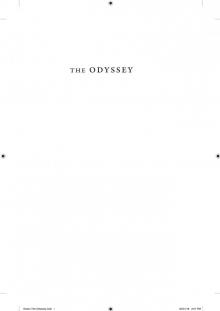 The Odyssey
The Odyssey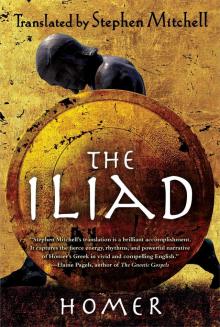 The Iliad
The Iliad The Iliad (Trans. Caroline Alexander)
The Iliad (Trans. Caroline Alexander)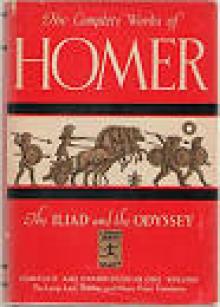 Complete Works of Homer
Complete Works of Homer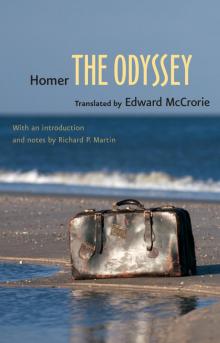 The <I>Odyssey</I>
The <I>Odyssey</I>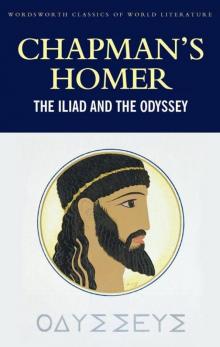 The Iliad and the Odyssey (Classics of World Literature)
The Iliad and the Odyssey (Classics of World Literature) Troy
Troy The Iliad (Penguin Classics)
The Iliad (Penguin Classics) Delphi Poetry Anthology: The World's Greatest Poems (Delphi Poets Series Book 50)
Delphi Poetry Anthology: The World's Greatest Poems (Delphi Poets Series Book 50)